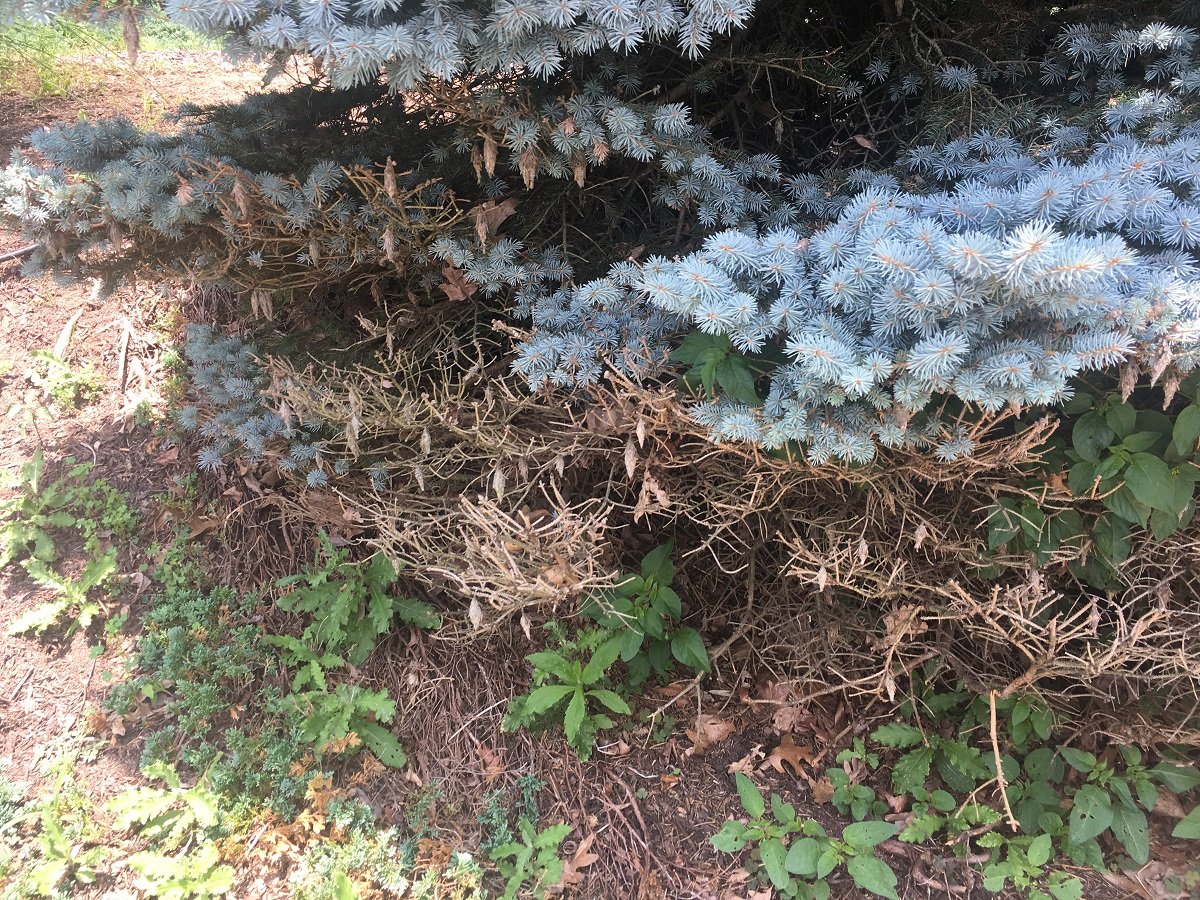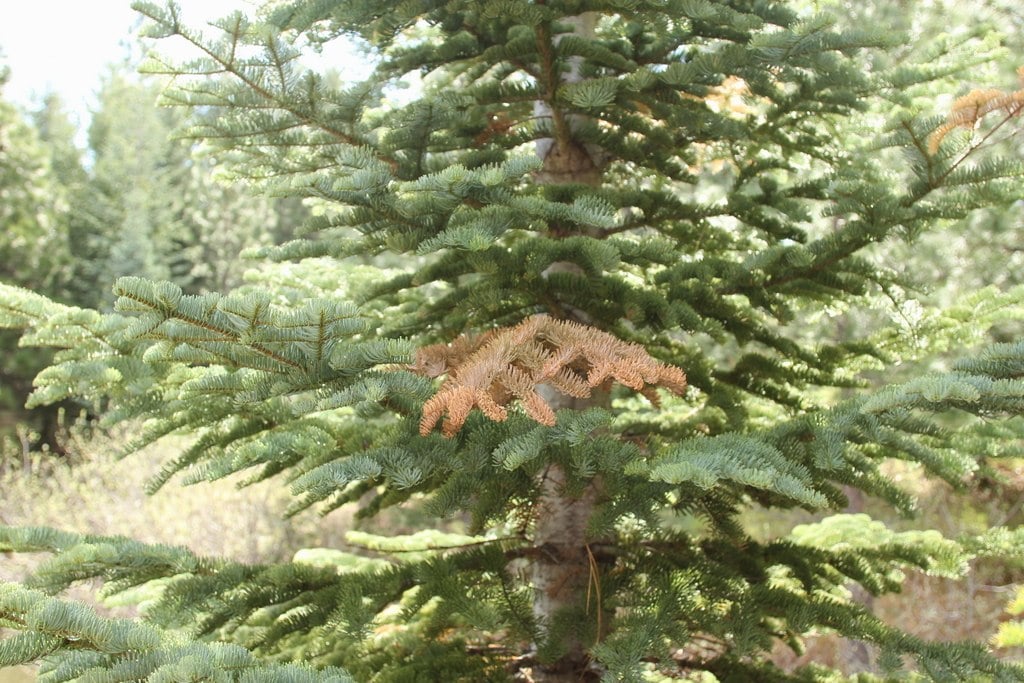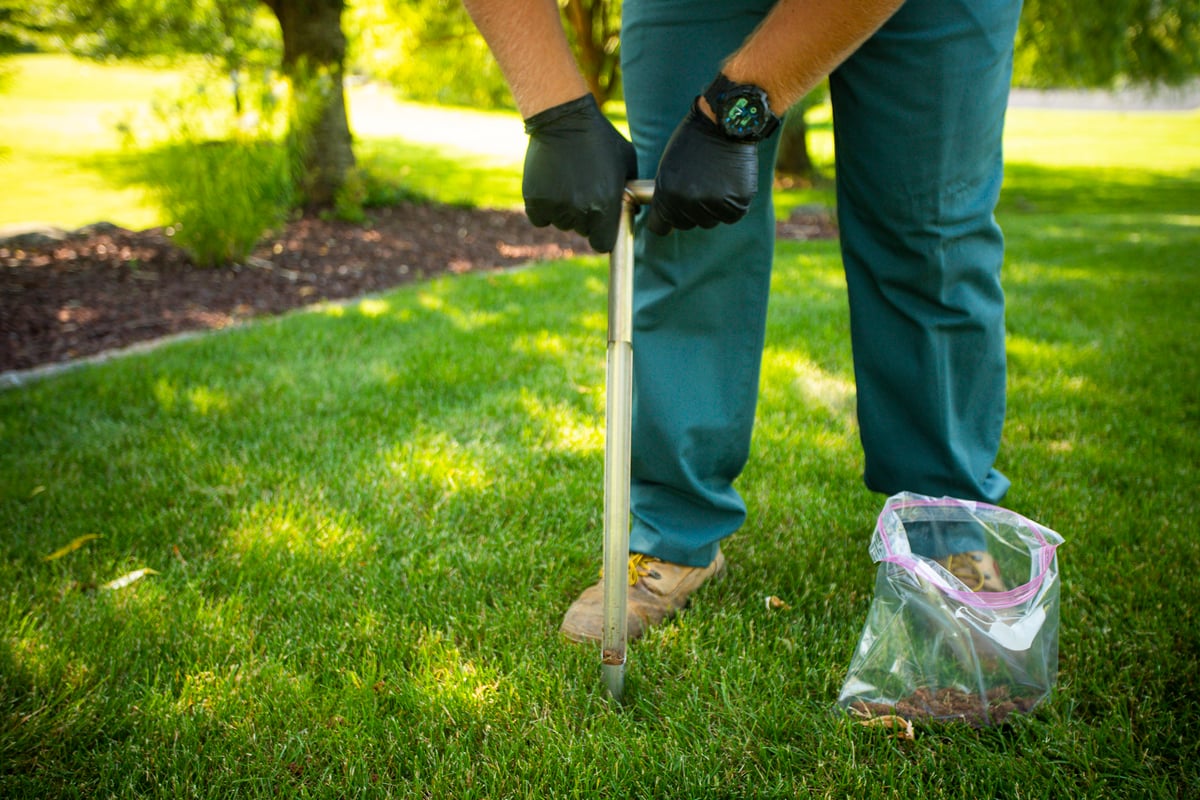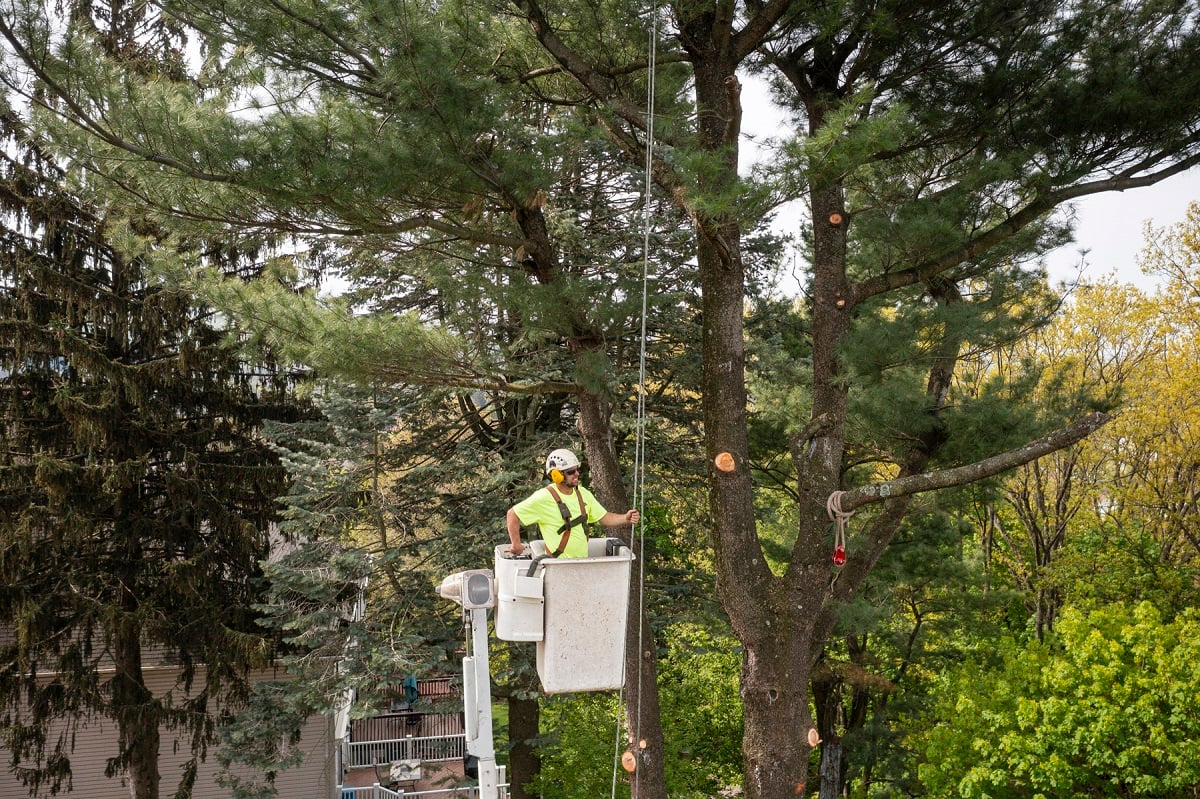Large tree specimens are all-stars in the landscape, perhaps none more than evergreens. These large trees bring great structure to the landscape by providing privacy, shade and vertical interest.
For all their size and variety, evergreens are especially prone to disease, pests and other problems. Left unchecked, many of these threats can become fatal.
Fortunately, good evergreen tree maintenance practices can prevent issues and provide recovery from pests and diseases.
Learn the steps you can take to identify problems, prevent further spread and maintain good cultural practices to keep your evergreens healthy and thriving.
Identify Evergreen Tree Pests
Like most ornamental plants, evergreen trees can be damaged or lost if left unprotected against common pests and diseases.
Unlike most ornamental plants, the void in the landscape left by dead or damaged evergreen trees can seem impossible to fill.
If you see browning or dropping needles, dead branches or large-scale dieback on your trees, be on the lookout for common pests. These trees can be easily attacked by insects if left untreated, making diagnosis difficult until damage becomes extensive.

Hemlock Woolly Adelgid, Scale, Bagworms, and Spider Mites are among the most common threats to evergreens, and can attack a wide range of trees. Browning or spotted needles, early needle-drop or visible markings like nests and webs are all signs of potential infestation.
In cold, northern climates, year-round evergreen foliage is a welcome burst of color in the winter landscape. Repeatable care plans are the best way to keep your evergreen foliage healthy and full while preventing insect problems.
Annual programs of foliar treatments, soil fertilization and other pest management can help to protect your plants before problems become widespread.
If your landscape is already showing signs of pest damage, early action is the best action. Foliar treatments can kill pests and prevent further infestations, while selective pruning or total removals may be necessary to protect other parts of the landscape.
Repeatable maintenance practices provided by a professional tree care service are the key to containing or preventing evergreen tree pest problems.
Protect Against Evergreen Tree Diseases
In addition to damaging insects, evergreen tree disease is another risk factor in the landscape and can cause the same unsightly damage as pests.
While there are a number of diseases that can take hold, a certified tree care service can help you identify and treat the most common types.
Needlecast is the most prevalent disease, a fungal infection that can slowly travel up the branches until the spread has become large enough to kill the entire tree.

Like Needlecast, Cytospora is a fungal infection that spreads from lower branches upward, killing large swaths of the tree until total dieback occurs.
Cytospora is a particular threat to Colorado Blue Spruce, a favorite landscape plant that can struggle to adapt to prolonged periods of warm, wet weather often seen in the Northeast.
As with pests, evergreen tree diseases are better controlled at the prevention stage than the recovery stage.
Regular, repeatable foliar applications or deep-root treatments can help protect your needled evergreens from infestation. Good cultural practices like watering in drought and mulching for soil moisture retention can keep your evergreens from becoming stressed and susceptible to disease.
Timing is everything. If your evergreens are showing signs of common diseases, a care plan that starts now and continues regularly can help to prevent total tree loss or the spread of disease to other parts of the landscape.
Monitor Soil Moisture & Temperature
You may have noticed evergreen tree decline in your neighborhood. While pests and diseases often show themselves after infections have begun, some environmental conditions can be controlled to make your evergreens more resilient to potential invaders.
Evergreens are generally susceptible to warm, wet weather, especially those native to the western and mountain regions of the US.
Trees can use additional care in areas where winter and summer temperatures vary wildly, and rainfall can be intense.

Sharp swings in temperature and soil moisture can stress these trees. Fortunately, there are ways to mitigate water loss or excessive moisture exposure when caring for your evergreens.
Good cultural controls can help to keep your evergreens healthy and resilient. While these trees are generally drought-tolerant once established, some watering may be needed in periods of prolonged drought or intense heat.
Appropriate mulching around the root zone can help to retain moisture and regulate soil temperatures. And while many evergreens are selected for their winter interest, cold weather can also be a threat.
Water loss in winter can be prevented with foliar applications that prevent excessive transpiration, or water evaporation from the foliage, when the ground is frozen and roots are unable to take in new water sources. A certified arborist or tree care service can provide these applications, even when the growing season is winding to a close.
Climate conditions can’t be fully controlled, but it’s never too late to begin good cultural practices. Mulching and watering are the basics available to any homeowner, no matter the age of your trees. If you’re looking for further cultural controls, consult a tree care service to help optimize the conditions around your evergreens.
Understanding Evergreen Tree Fertilizers
Monitoring evergreens for signs of stress and standard cultural care practices are within reach for even modest green-thumb homeowners.
However, stressed or diseased evergreens, especially mature specimens, may require fertilization as a means of regaining health.

Large trees in the landscape may seem self-sufficient, but they often lack access to necessary resources that are abundant in wild settings. Fertilization can bridge the gap between ideal placement in the landscape and natural placement in the wild.
Proper fertilization starts with proper testing, which determines the health of your soil and its effect on the landscape. Deep-root fertilization and large-scale foliar applications may be needed to help your evergreens thrive in imperfect conditions.
These are specialized processes best left to a certified tree care service, but may be necessary to provide your trees the tools they need to stay healthy.
Practice Good Evergreen Tree Pruning
The appeal of large trees in the landscape is in their natural size and shape. Pruning your evergreens may seem counterproductive. Done correctly, pruning can solve problems of overgrowth and contain the spread of disease while maintaining the natural appeal of your trees.
Proper evergreen tree pruning shouldn’t include gas shears. Selective removals, or structural pruning, is the preferred method of reduction that reduces growth and maintains the natural shape of your trees.

Pruning may be a necessary part of recovery from pest or disease problems, and heavy pruning can often seem shocking in how it changes the canopy of your trees. However, removing dead or damaged wood allows your evergreens to direct nutrients to the parts of the tree that need them most.
By selectively cutting out unwanted or damaged growth, your evergreens will be fuller, healthier and more resilient to potential pests and diseases.
The Right Tree Care Service for Your Evergreens
The best evergreen tree maintenance happens before problems arise, but there are still ways to supplement and save your trees if issues are addressed in time.
Don’t lose sleep wondering when pests or diseases will make themselves at home in your evergreens. Hiring a professional tree care service to assess your property and create a long-term care plan can provide the extra care needed to maintain the value and beauty provided by large evergreens in your landscape.
With the right care for your trees, you’ll gain valuable peace of mind. If you’re interested in having your trees inspected and their health assured, contact us for a free consultation or give us a call at 833-JTE-TREE.
Image Source | Cytospora




